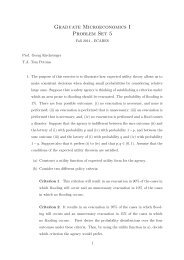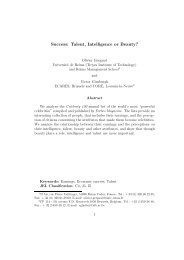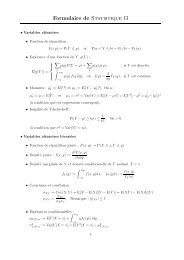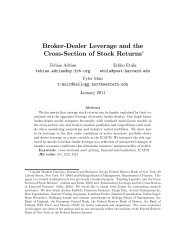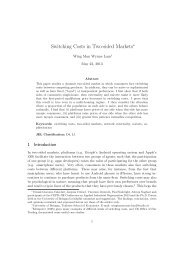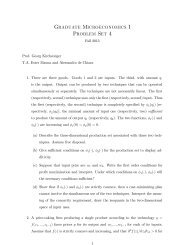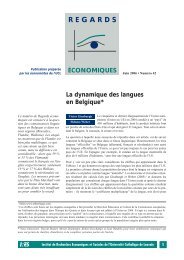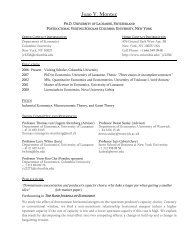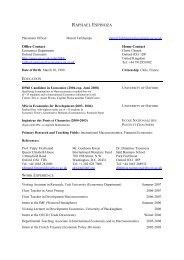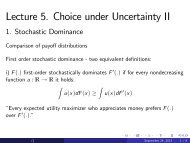HAR volatility modelling with heterogeneous ... - ResearchGate
HAR volatility modelling with heterogeneous ... - ResearchGate
HAR volatility modelling with heterogeneous ... - ResearchGate
You also want an ePaper? Increase the reach of your titles
YUMPU automatically turns print PDFs into web optimized ePapers that Google loves.
In the SVIJ case, jumps has no impact on future <strong>volatility</strong>, but there is still a benefit inremoving the jump component. Indeed, in this model the persistence is conveyed only bythe continuous <strong>volatility</strong>, while total quadratic variation (which is estimated by realized<strong>volatility</strong>) also contain the memoryless jumps. Thus, by separating the jumps from thepersistent part in the explanatory variables, a better model specification is obtained. Weconclude that, when the memory of <strong>volatility</strong> is mainly contained in the continuous partof quadratic variation, there is still a potential benefit in removing jumps even if theydo not impact on future <strong>volatility</strong>. This benefit persist also for long horizon forecasts.Importantly, in this case, the jump component is found to be insignificant.In the SVCJ model, when a jump occurs in price it also occurs in <strong>volatility</strong> and it ispositive. Thus, when there is a jump in price, <strong>volatility</strong> becomes higher and it stayshigher because of its memory persistence. That explains why, in this case, jumps arefound to be significant in explaining future <strong>volatility</strong>, contrary to the SVIJ case. Hence,our simulation results show that a possible mechanism explaining the significant impactof jumps on future <strong>volatility</strong> is given by the presence of contemporaneous jumps in priceand <strong>volatility</strong>, a possibility which has been recently empirically confirmed by Todorov andTauchen (2008). It is remarkable the similarity between the figures reporting the Newey-West corrected t-statistics of the daily jump coefficient estimated on the simulated SVCJmodel (Figure 8 right panel) and on the empirical S&P500 (Figure 3).On the other hand, the <strong>heterogeneous</strong> leverage effect found in real data cannot be completelyexplained by model (4.1). Indeed, the presence of a negative coefficient ρ ≈ −0.5(estimated on S&P 500 data) is able to explain only short-period leverage effect, bypropagating negative returns into contemporaneous, and by memory persistence, future<strong>volatility</strong>; while, in the real data, we provided evidence for strong <strong>heterogeneous</strong> leverageeffect, being also the weekly and monthly negative components highly significant. Themodel specification 4.1 is then insufficient to explain our results which demand for a morecomplicated continuous process <strong>with</strong> a richer specification.21



